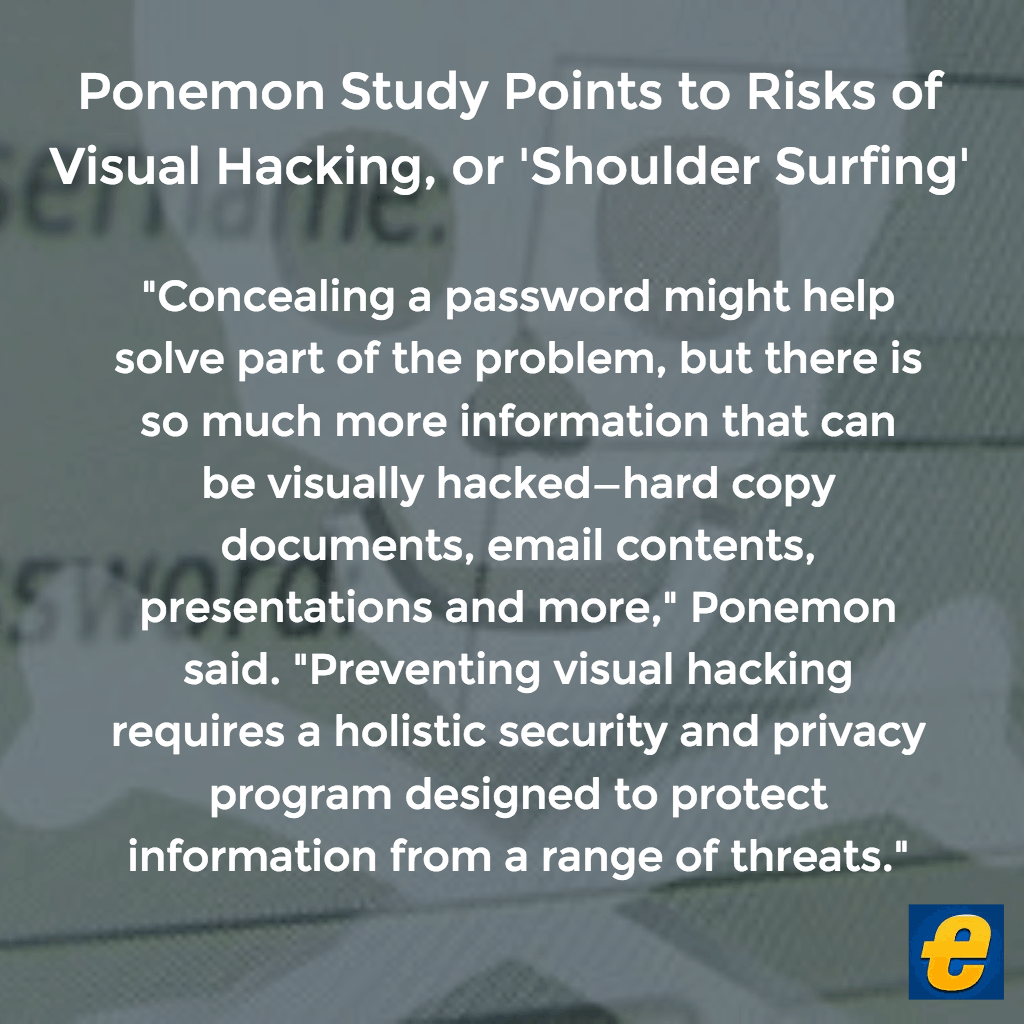ARCHIVED CONTENT
You are viewing ARCHIVED CONTENT released online between 1 April 2010 and 24 August 2018 or content that has been selectively archived and is no longer active. Content in this archive is NOT UPDATED, and links may not function.Extract from article by Sean Michael Kerner
Whether you call it ‘shoulder surfing,’ or just plain eavesdropping, new research from 3M and the Ponemon Institute outlines the risks of visual hacking.
It happens every day in offices, coffee shops and airplanes around the world—one person will look over another person’s shoulder and see private information on a computer screen.
Although some might just call it eavesdropping, it’s actually a real cyber-risk, known as visual hacking. 3M and the Ponemon Institute have been studying the visual hacking problem for several years, and recently released the 2016 Global Visual Hacking Experiment study, detailing the impact of the phenomenon.
The study included trial results from 46 companies in eight countries—the United States, United Kingdom, India, Korea, Germany, Japan, China and France—to identify the risks and responses to visual hacking.
The study involved a researcher wearing a temporary security badge and given space in the participating organization. The researcher conducted multiple tasks to identify visual risks, including simply walking through the participating offices to see what information was viewable on company desks and computer screens.The study found that, in total, across all regions, 91 percent of attempts at visual hacking were successful.
Read the complete article at Ponemon Study Points to Risks of Visual Hacking, or ‘Shoulder Surfing’






















